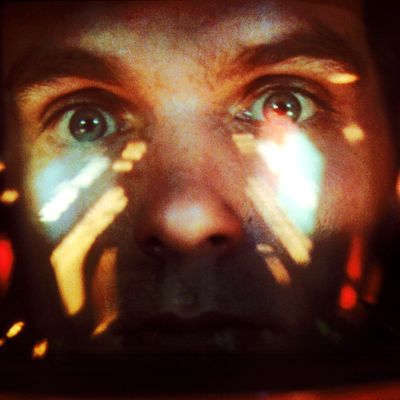
One of my favorite places online is the last screen of Timehop. Timehop is a nostalgia app. It absorbs a stream of my social media, and turns it into a slideshow: All the things that happened on this day, however many years ago. I like the peek into the past that Timehop provides. I like to be reminded of the things I’ve forgotten. But more than anything else, I love that Timehop slideshows end. Online, these days, the feeling of coming to the end of a feed is so rare, so elusive, that to encounter it here is immensely satisfying.
There is, by design, no bottom to your feed in Twitter or Instagram. There is no time that is off limits. When you pull to refresh, you get new stuff. On some level, the art of these apps is to tease you into the front door, then never show you an exit. And — holy fuck — it is effective.
It’s hard to comprehend right now just how thoroughly Instagram is dominating our collective attention. The company has reported 400 million daily active users — that is, people who check at least once a day — and I can only imagine what its internal numbers look like when it comes to how long people spend in the stories on their feed. I’ve never used a social network that has managed to hold so many varying social circles and interests under one roof. My current Instagram feed has my close friends, Weird 3-D Art, sports fandom, crushes, friends from high school, and my mom. And it kind of works!
The only thing I hate about Instagram is the feeling I get when I’m swiping deeper and deeper into my feed and I want to quit — but I don’t. There is a point now, multiple times a day, where I’m tapping through my stories and I feel my brain turn to mush. I see two seconds of my friends dancing around at a party, then a meme, then a model filming her workout, then a conference I didn’t go to, then I just can’t. I almost always end an Instagram session feeling worse. Like scratching an itch and stopping only when I realize I’ve broken the skin.
There’s no doubt that Instagram Stories is a tremendous, occasionally transcendent, wellspring of creativity. You can also make the comparison that swiping, mindlessly, through your Instagram feed is no different than what it used to be like to flip, mindlessly, through cable TV. But the flipping on cable was an artifact of its design, not the main attraction. The main attraction on cable is Mad Men or Game of Thrones. Shows where you put down the remote.
On the creators’ side, sharing on Instagram Stories is one of the most effortless, highest-yielding serotonin deals on the market. You can hold your thumb on the record button for a few seconds, tap the share button without even rewatching, then sit down wherever you are and know that lots of people are going to see it. Instead of just looking like poorly lit, shaky cam footage, the casualness of it exudes intimacy. DMs start flowing into your in-box and if the DMs aren’t enough, Instagram gives you the purest social-media stats imaginable. A list of everyone who has seen your story, ranked by significance.
Human brains don’t have many defenses against this combo of depressant and stimulus. We gorge. In the drug world, there is a cocktail known as a speedball, where you mix a depressant and a stimulant — usually heroin and cocaine — then consume them intravenously. It’s such a dangerous combination, known for its lethality, because it results in a state where the user doesn’t realize how high they are, so they take more.
Instagram knows that burnout is a problem and they’ve recently rolled out an “All Caught Up” feature to attempt to mitigate. “All Caught Up” gives you a line in your feed when you’ve seen all of the new posts from accounts you follow. It’s better than nothing — but it’s also a feature that has a way of exposing the core problem of its feed and the feeds of many other social networks. Algorithms are incredible at getting you to tap deeper into your feed, but because they can’t process what the stories in the feed mean, they have no idea how to build to a satisfying ending.
Endings are hard to nail for the primordial reason that good stories are hard to tell. Pulling people in is delicate, earning trust that a story is going somewhere worthwhile is hard, hitting people with an end that wows is where the most human part of storytelling lives. The ending is where the meaning happens.
We’re in an era where entertainment on the phone is maturing. The screen on your phone is gorgeous. The sensors and LTE are incredible. The vertical story format, with all the interactive graphic overlays, feels cinematic in a raw, unexplored way. But what I crave on my phone is something old. I want to tap or swipe right on a story and know that I’m going somewhere — that there’s a point. That I’m being led toward an ending.





























